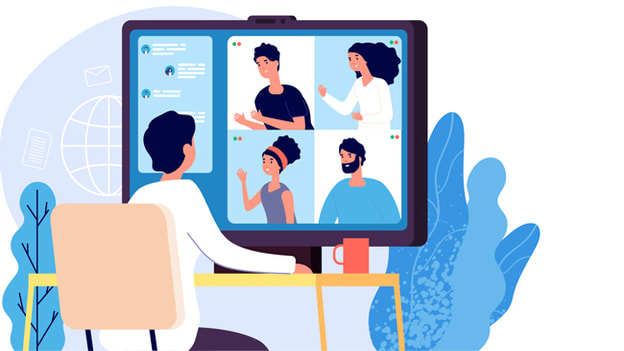Supporting online workplaces: A case for building better integrations

With the rapidly evolving COVID-19 pandemic, HR and L&D leaders are finding themselves inundated with messages such as “7 Steps to Make Work from Home Effective” or “How to take your Classrooms Online Quickly”. These messages address the immediate concerns of the leaders who must support a dispersed workforce that faces travel and commute restrictions. Business leaders are able to figure out that protecting their people will help them to survive through this adverse situation, as employees can further protect clients and business operations too. The key issue here is to provide a flexible infrastructure for the employees, with the help of tools and technology so that employees are safe at their homes and are able to remote work and attend trainings.
Looking beyond the current challenges, however, reveals deeper issues that we must address in a timely manner. These issues broadly break down into two categories: process issues and people issues.
Process Issues
Let’s face it: No matter how sophisticated the enterprise software systems, underlying many workplace processes there is a tacit assumption that people meet at work. For example, consider an online performance management system. Typically, a manager and a direct would both have access to such a system.
A frequent use case might be both of them accessing the system to look up and record key points discussed during one-on-one meetings or continuous performance reviews.
The employee experience, however, differs greatly when those one-on-one meetings or performance reviews occur over a Zoom video call. Or when performance feedback is shared over Slack. Such communication technologies must be weaved into the system of record for future reference. This is a simple illustration of a process issue underlying remote work. Additional use cases are easily found throughout the employee life cycle from recruitment to separation.
People Issues
A big part of coming to work has to do with developing a sense of shared mission, becoming part of work culture, belonging to a community of peers, and regenerating the drive to move forward. When people work from remote locations, their isolation causes them to start weakening their purpose, shared values, affiliation, and motivation.
Technology may provide infrastructure and integrated processes may facilitate workflows, but what about the soft yet critical drivers of success such as purpose, values, affiliation, and motivation? This is where integrated collaboration and social network technology helps. For example, a set of online team-building games, pulse polls, chatbots, nudge platforms for micro-learning content, and other engagement applications, carefully integrated with collaboration and networking platforms will go a long way in restoring the sense of workplace in the home office.
A Bonus
Better integrations between systems of record and systems of engagement have an additional payoff. With the workplace going online, organizations can extract additional value out of the vast stores of behavioral data. These include communication patterns, engagement levels, workplace technology usage, and many more. By leveraging the power of analytics and BI platforms, HR and L&D leaders can generate valuable insights into talent and work data.
Next Steps
Once you see the immense payoff of building better integrations, the next step would be to look for the low-hanging fruit. Start with an inventory of workplace technologies you use. This would include a variety of HR tech, learning, and collaboration platforms such as HRIS, LMS, team portals, enterprise social networks, virtual meeting platforms, office productivity solutions, and so forth. Then look at a list of processes that are disrupted due to increasing levels of remote work. These might include training, performance management, employee engagement, recruiting, and so on. Finally, work with a systems integration consultant who has deep knowledge of HR and learning processes to identify low-investment, high-returns integrations that can be built quickly.
Organizations that can scale solutions quickly and effectively always has a bonus point to thrive in a crisis. As the growth in virtual work is likely to be a growing trend, the leaders need to chalk out all the possibilities and challenges to lead the way towards the new disruption of the workplace. The COVID-19 pandemic only serves to illustrate the need for leaders to get their organizations better prepared for remote working possibilities. With better use of the right tools and techniques, HR and L&D leaders can more accurately help direct funds to enhance employee engagement, productivity, and ultimately organizational effectiveness.
















